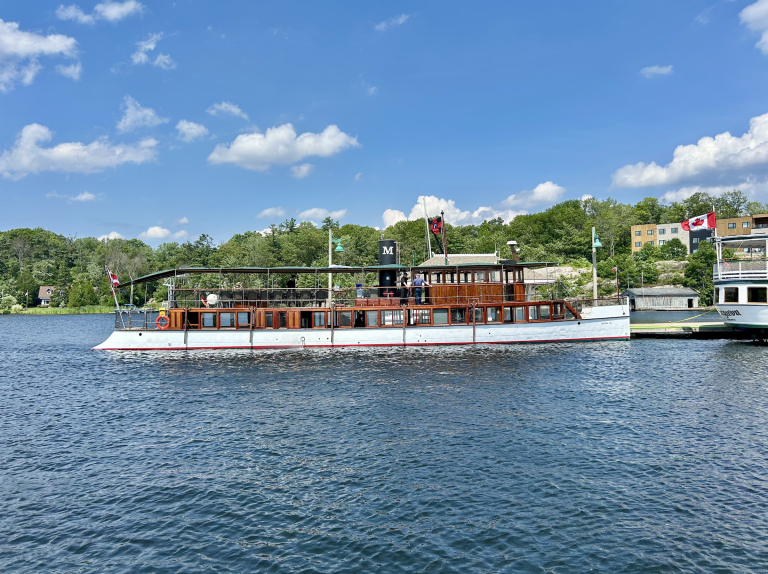Types of Powerboats
When you’re out on the water, the kind of powerboat you choose can greatly influence your experience. Whether it’s for leisure or sport, these mechanical marvels are as varied in design and functionality as they are exciting.
Speedboats
If you’re all about velocity and performance, you’ll find speedboats produce an adrenaline rush that’s hard to match. Known for their powerful engines and sleek design, these boats are built for speed. Imagine feeling the wind whip through your hair as a twin-engine speedboat races across the water’s surface.
Bowriders
Ready for a fun-filled day with family and friends? Then the versatile bowrider is your go-to. With open bow areas, these boats welcome more passengers and facilitate a variety of water activities.
Cabin Cruisers
Experience luxury on the water with a cabin cruiser. These boats often include comfortable accommodations—think of them as your floating holiday home. With amenities for overnight stays, they cater to the cruiser who doesn’t want to leave the comforts of home behind. Cabin cruisers typically use robust inboard engines and technology to offer a smooth, steady ride for those long-distance ventures, as described by luxury boat manufacturer, Ocean Yachts.
Center Console Boats
Whether you’re an avid fisherman or enjoy casual trips around the bay, center console boats have become synonymous with versatility. With the helm positioned in the center of the boat, you get 360-degree access to the water, perfect for casting a line from any angle. Many center consoles are rigged with triple outboard engines, giving a reliable performance.
Key Features and Accessories

In the exhilarating world of powerboats, every enthusiast knows that it’s the advanced engines, sleek hull designs, cutting-edge navigation systems, and luxurious touches that distinguish the best vessels. Whether you’re out for performance or indulgence, let’s explore what sets a premium powerboat apart from the rest.
Engines and Horsepower
Have you ever felt the thrill of raw power as you throttle up? The heart of a powerboat is its engine, with horsepower (HP) ratings that can soar into the thousands for performance models. For instance, Formula Boats, known for their high-performance powerboats, equip their vessels with engines that can deliver upwards of 600 HP. High-powered engines ensure that propulsion and performance are maximized for those who crave speed and agility on the water.
Hull Design
Ever wondered why a powerboat cuts through the water like a knife through butter? Hull design is key, with deep-V designs commonly used for their ability to slice through waves and provide a smoother ride in rough conditions. The design isn’t just about performance; it significantly contributes to the vessel’s safety and stability.
Navigation and Electronics
Today’s powerboats are akin to technological marvels floating on water. The integration of high-tech navigation and electronics systems is essential for both safety and convenience. Touchscreen interfaces, GPS mapping, and radar can be found on state-of-the-art models, with technology like the Simrad GO9 XSE being an example of a top-tier fish finder with navigational competencies.
Comfort and Luxury
Lastly, who says you can’t be comfortable while zipping across the waves? Powerboats can be floating paradises with luxury and comfort rivaling high-end automobiles. Premium seating, ample storage, and amenities like air conditioning and heaters mean that your time of the water is as enjoyable as possible. For those who appreciate the finer things, accessory options such as the best boat grill from Magma or waterproof Bluetooth speakers enhance the experience—think concert hall acoustics at the mere push of a button.
Don’t you agree that knowing the ins and outs of these features will not only boost your boating knowledge but also influence your next purchase or upgrade? After all, it’s these details that can define your seafaring lifestyle!
Powerboat Brands and Manufacturers
When you’re exploring the world of speed and luxury on water, you’ll come across some standout names synonymous with quality and reliability. Let’s steer our course through some of the leading powerboat brands known for their exceptional performance boats, comfort, and style.
Yamaha Boats
Yamaha stands as a titan in the marine industry, offering a fleet of powerboats that blend performance and pleasure. With their jet propulsion systems, these boats are not only fun but also safe, as they come without external propellers. The Yamaha lineup includes models ranging from nimble jet boats to spacious luxury versions, where you can feel the thrill of the waves without compromising comfort.
Sea Ray
Considered by many as a leader in the powerboat realm, Sea Ray crafts vessels that epitomize the balance between elegance and edge. Known for their sporty yachts and cruisers, Sea Ray’s models offer you a slice of heaven with their plush interiors and state-of-the-art amenities. It’s not just about the looks; these boats are engineered to perform, ensuring your time on the water is nothing short of extraordinary.
Boston Whaler
Praised for their unsinkable hulls, Boston Whaler has carved a niche for themselves in the powerboating world. This manufacturer is particular about safety and dependability without skimping on luxury. Their boats, often termed the “Legends of the Sea,” range from versatile center consoles to upscale cabin cruisers, giving you a trusted platform for any aquatic adventure.
Uncover the passion behind each model’s creation and set sail on your next voyage with a trusted builder. Whether you’re after adrenaline-filled water sports or serene yachting escapades, these brands have something tailored just for your experiences on the water.
Choosing the Right Powerboat

When you’re in the market for a powerboat, the sheer variety can be overwhelming. You want performance, luxury, and technology, all within your budget. Let’s slice through the waves and focus on what really matters for you and your nautical adventures.
Assessing Your Needs
What are you dreaming of when you think of a powerboat? Is it speeding across the bay, rods bending with the next big catch, or leisurely cruising with your family? Identify the primary use: fishing, family fun, or traveling long distances. Keep in mind, the choice you make here steers the rest of your decision-making process.
Budget Considerations
Be frank about your budget. A brand new speedboat can set you back a hefty sum, but remember, the initial price isn’t the whole story. The National Marine Manufacturers Association states that maintenance costs can be about 10% of the purchase price annually, so factor that in when you’re thrashing out the numbers.
Size and Maneuverability
Bigger isn’t always better. A compact powerboat can offer thrilling performance and easier handling, particularly in choppy waters. Conversely, a larger vessel may be necessary for stability and features when planning long-haul sea journeys. Consider what you’ll be comfortable maneuvering and where you’ll be doing most of your boating.
New vs. Used Boats
A shiny, new boat is tempting, but a gently used vessel could get you more bang for your buck. When considering new versus used, weigh the warranties and the potential for modern features against the depreciation and potential hidden costs of pre-owned models.
Maintenance and Care

Taking care of your powerboat is crucial to ensuring peak performance, maximizing reliability, and guaranteeing safety during your watery adventures. Remember, a well-maintained powerboat can save you money in the long run on costly repairs and downtime.
Regular Maintenance
The heartbeat of your powerboat is its engine, and routine maintenance is your best defense against unexpected failures.
- Check the fuel tank: Always start with inspecting the fuel tank for any signs of contamination or leaks, as clean fuel is essential for a healthy engine. Did you know that water contamination in the fuel accounts for a significant percentage of marine engine issues?
- Engine checks: Regular oil changes and filter replacements are like a health check-up for your powerboat, and adhering to the manufacturer’s schedule can also preserve the warranty.
- Battery care: Keep the battery terminals clean and check the charge before setting sail. A dead battery is a common headache you’d rather avoid.
Remember, each manufacturer has specific guidelines, so consult your owner’s manual for detailed instructions!
Cleaning and Storage
A clean powerboat isn’t just about good looks—it’s about ensuring longevity and maintaining value.
- After each outing, rinse your powerboat to remove salt, algae, and other abrasive materials. Boats.com suggests using a light brush and mild soap for most cleaning tasks.
- Storage tips: When it’s time to dock for longer periods, proper storage conditions are essential to keep your powerboat safe from environmental damage. Keep it covered and, if possible, out of the water to prevent hull blisters and corrosion. Remember, a well-protected boat ensures that the safety measures you rely on are always in order.
Ultimately, maintaining and caring for your powerboat is a journey, not a destination. It’s about keeping you, your passengers, and your investment safe. So, grab your mild soap and maintenance checklist, roll up your sleeves and give your powerboat the love it deserves!
Safety and Regulations
When you set out on your powerboat, it’s crucial to keep a few things in mind: your safety, the safety of your passengers, and staying compliant with rules and regulations. Let’s not skim over these details, as they could mean the difference between a fantastic day on the water and an unpleasant run-in with the authorities—or worse, an accident.
Powerboat Safety Essentials
Before throttling up your speed machine, let’s talk about what you should have on board to ensure everyone’s safety. Don’t forget, this isn’t just good sense—it’s the law.
- Life Jackets: First and foremost, you need a USCG-approved life jacket for each person aboard. They aren’t just floaty fashion statements; they save lives.
- Communication Device: An efficient sound-producing device is mandatory for powerboats less than 65.6 feet. In simple terms, make sure you have a way to signal for help if the unexpected occurs.
- Fire Extinguishers: Fires can happen, even on water! Ensure you have the right type of fire extinguisher on board to handle any flames that dare disturb your peaceful voyage.
- Navigation Lights: If you’re out past sunset or before sunrise, proper lighting is not optional. It’s about seeing and being seen.
Boating Regulations
Regulations are like the buoys of boating—they guide you safely and keep you in line. What do you need to know to stay legal and enjoy your time without hassle?
- Licensing: Depending on your location, you may need a boater’s license. Think of it as a driver’s license for the water. Make sure yours is current and recognized by the waters you’ll be cruising.
- Speed Limits: Yes, they exist on the water too! Not every area is a free-for-all. Certain zones will have restrictions especially near marinas, swimming areas, or ecologically sensitive regions.
- Comfort: We’re not just talking plush seating—a comfortable outing also means having enough space for each passenger and not overloading your boat beyond what’s considered safe capacity.
- State-Specific Regulations: You’ve got your federal laws, and then you’ve got your state quirks. Some states have specific rules that are unique to their waters, so do your homework!
Remember, each powerboat is a unique vessel and recommends it’s own maintenance rituals that can affect your safety and adherence to regulations. Brand names like Sea Ray and Boston Whaler are known for crafting their boats with safety and comfort in mind.
By taking the time to familiarize yourself with these safety measures and regulations, you’re not just preparing for a safe trip; you’re ensuring that your time on the water is as enjoyable and stress-free as possible. Now, who’s ready to make some waves, within limits, of course?
FAQs (Frequently Asked Questions)
What speeds can I expect from a powerboat?
Your powerboat’s speed can vary widely based on factors like size, design, and engine power. Generally, a leisure powerboat might cruise around 20 knots, while high-performance models could soar past 50 knots!
Any safety tips for first-time powerboat users?
Absolutely! Always wear a life jacket, check the weather before heading out, and ensure your boat has all necessary safety equipment. Familiarize yourself with the operation and emergency procedures—safety first!
Is fishing viable with any powerboat?
While not all powerboats are designed for fishing, many are very suitable. Features like rod holders and live wells turn a standard powerboat into a fishing-friendly vessel.
Remember, the joy of boating comes with responsibility. By keeping these FAQs in mind, you’re all set for a fantastic time on the water. Happy boating!







